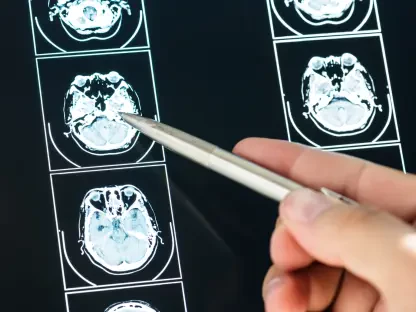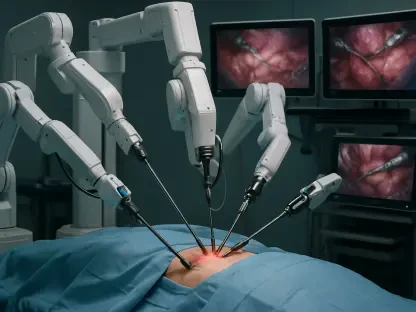In the high-stakes world of hospital intensive care units (ICUs), where every second can mean the difference between life and death, a quiet revolution is underway that promises to redefine patient outcomes. Traditional methods of monitoring and predicting patient deterioration, long relied upon by medical staff, are increasingly showing their limitations in these critical environments. Systems that once seemed adequate for general wards struggle to keep pace with the complex needs of ICU patients, often resulting in delayed interventions. Enter artificial intelligence (AI), a technology that is not just supplementing but fundamentally reshaping how critical care is delivered. By harnessing vast amounts of data and uncovering subtle patterns invisible to the human eye, AI is stepping in where outdated tools fall short. This shift is more than a technological upgrade; it represents a profound change in clinical practice, offering hope for better survival rates and more efficient hospital operations.
The Shortcomings of Traditional Early Warning Systems
Limitations in High-Acuity Environments
In ICUs, where patients often battle life-threatening conditions like sepsis or organ failure, traditional early warning systems (EWS) such as the National Early Warning Score (NEWS) reveal significant weaknesses. These systems depend on static metrics—think heart rate, blood pressure, and respiratory rate—to produce a single score meant to flag deterioration. However, the reality of ICU patients is far more nuanced, as many already present with abnormal vital signs as a baseline due to their severe conditions. This makes it nearly impossible for a one-size-fits-all scorecard to distinguish between a stable state and a dangerous decline. Research has shown that while such tools may hold value in less acute settings like emergency departments for short-term predictions, their accuracy plummets in critical care, often leading to missed opportunities for timely intervention and unnecessarily prolonged hospital stays.
Consequences of Delayed Responses
The fallout from relying on outdated EWS in critical settings is not merely academic; it directly impacts patient survival and hospital resources. When these systems fail to detect subtle shifts in a patient’s condition, clinicians are left reacting to crises rather than preventing them, which can mean the difference between recovery and irreversible harm. For instance, a gradual drop in oxygen saturation might go unnoticed under a static scoring model until it becomes an emergency, straining staff and increasing the likelihood of adverse outcomes. Beyond the human toll, this reactive approach inflates costs through extended ICU stays and unplanned transfers to higher levels of care. The gap between what these traditional tools offer and what is needed in high-acuity environments underscores an urgent demand for more adaptive, responsive solutions that can keep up with the dynamic nature of critical illness.
The Rise of AI-Driven Solutions in Critical Care
Harnessing Data for Predictive Precision
AI-driven systems are emerging as a game-changer in critical care, offering a level of precision that traditional EWS simply cannot match. Unlike static scorecards, AI leverages machine learning to analyze an immense array of data points, from lab results and imaging to real-time vital signs. This allows for the detection of subtle patterns—such as minute changes in ECG readings or early indicators of sepsis—that might escape even the most vigilant clinicians. Studies have demonstrated AI’s remarkable impact, with reductions in in-hospital mortality by over 30% compared to conventional methods. By anticipating deterioration before it becomes critical, these systems enable earlier interventions, fundamentally altering the trajectory of patient care in ICUs and proving that technology can outpace human observation in complexity and speed.
Operational and Economic Benefits
Beyond saving lives, AI’s integration into critical care settings brings tangible operational and economic advantages to hospitals. Predictive analytics not only help prevent emergencies but also optimize resource allocation, reducing unnecessary ICU transfers and shortening lengths of stay. This efficiency translates into significant cost savings, a pressing concern for healthcare systems under constant financial pressure. Moreover, AI’s ability to prioritize alerts cuts down on alarm fatigue among staff, ensuring that attention is directed to genuine threats rather than false positives. While challenges like clinician trust and regulatory hurdles remain, the data paints a clear picture: AI is not just a tool for better outcomes but a strategic asset for streamlining hospital workflows. As algorithms continue to evolve, the potential for even greater impact on both patient care and institutional efficiency grows exponentially.
Addressing Implementation Challenges
Despite its promise, the adoption of AI in critical care is not without obstacles that must be navigated carefully. Clinician skepticism often stems from a lack of understanding of how AI models arrive at their predictions, creating a trust barrier that slows integration into daily practice. Regulatory frameworks also pose significant hurdles, as ensuring patient safety and data privacy requires rigorous oversight and can delay deployment. Additionally, the risk of alarm fatigue persists if systems are not fine-tuned to minimize false positives, potentially undermining their effectiveness. Addressing these issues demands a collaborative approach, involving education for healthcare providers, transparent algorithm design, and robust partnerships with regulatory bodies. Only through such efforts can AI’s full potential be realized in transforming high-acuity care environments into safer, more responsive spaces.
Looking Ahead: The Future of AI in Hospital Care
Building a Foundation for Wider Adoption
Reflecting on the strides made, it’s evident that AI has carved a significant path in enhancing critical care by outstripping the capabilities of traditional early warning systems in ICUs. The journey has showcased how technology pinpointed subtle health declines with unprecedented accuracy, ensuring timely interventions that saved countless lives. Hospitals that embraced these intelligent systems witnessed not just improved patient outcomes but also a marked reduction in operational strain. The evidence from past implementations underscored a pivotal shift, where data-driven insights became the bedrock of clinical decision-making. This progress laid the groundwork for a broader acceptance of AI, proving its worth in the most demanding medical settings and setting a precedent for innovation in healthcare delivery.
Strategic Steps for Sustained Impact
Looking to the next phase, stakeholders must prioritize actionable strategies to embed AI seamlessly into hospital ecosystems. Investment in health tech companies with strong proprietary datasets and established hospital partnerships should take precedence, as these entities are best positioned to drive innovation. Monitoring regulatory milestones, such as FDA approvals, will be crucial to ensure compliance and build trust among clinicians. Additionally, supporting infrastructure providers that enable secure data handling can accelerate AI integration. Hospitals should focus on training programs to familiarize staff with these technologies, mitigating resistance and fostering a culture of adaptation. By aligning clinical, technological, and financial priorities, the healthcare sector can sustain this momentum, ensuring that AI continues to redefine critical care with precision and efficiency for years to come.









